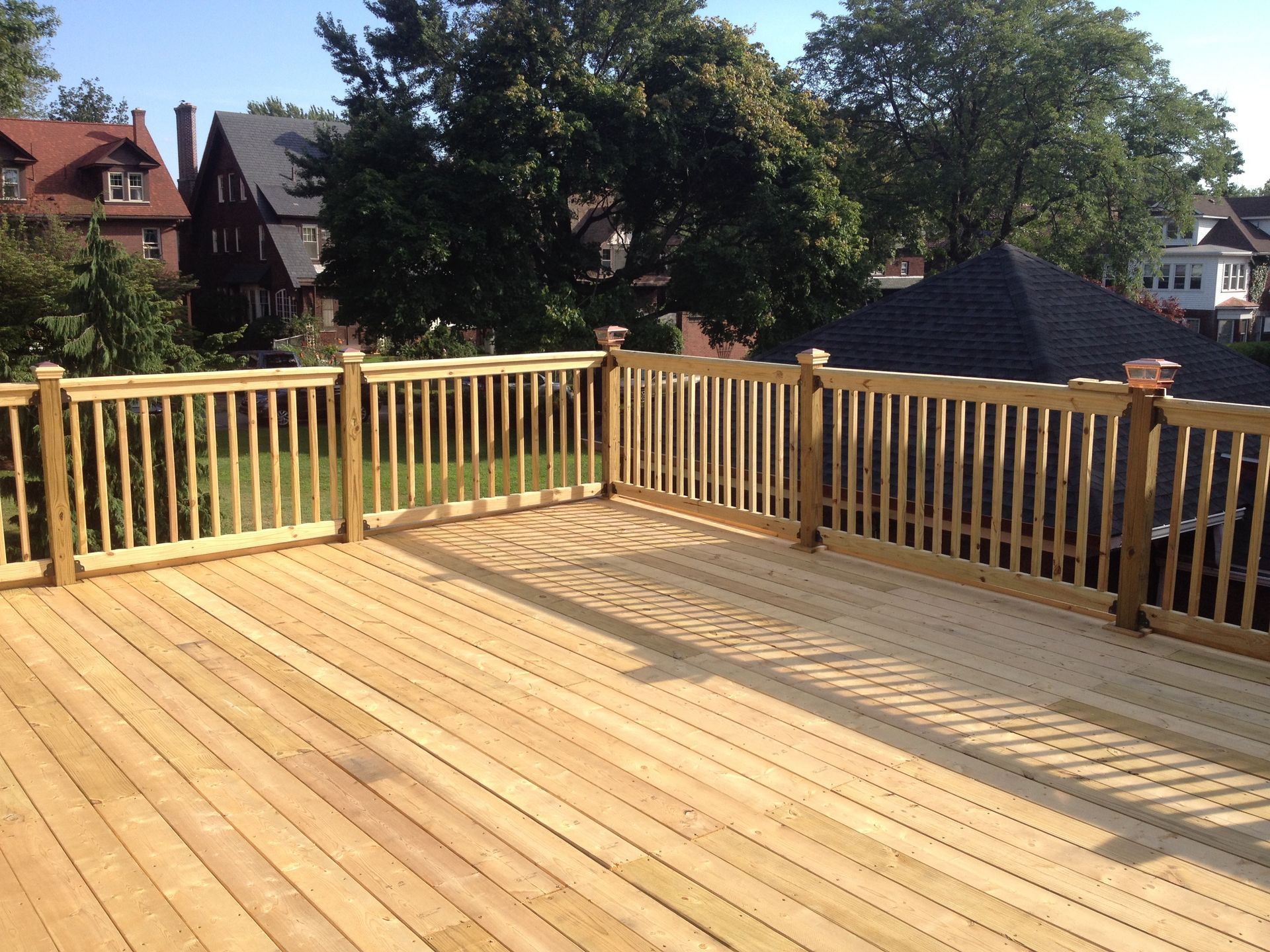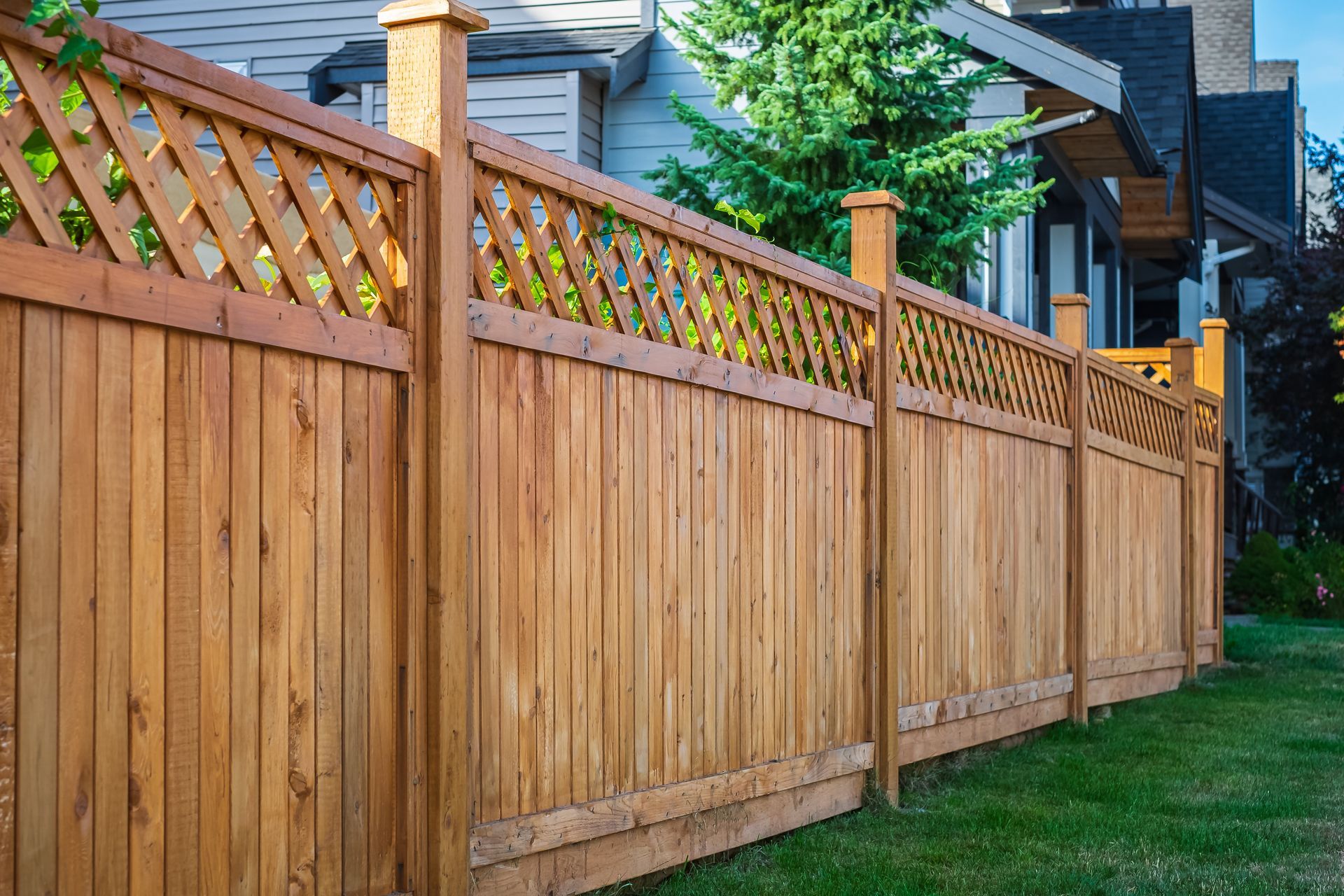How to Choose the Right Fence for a Sloped Yard

Building a fence on a sloped yard can be a challenging task, but with the right planning and design, it can also be an opportunity to enhance your outdoor space. When it comes to fence construction in London, Ontario, Deck and Fence London is here to guide you through the process of selecting the perfect fence for your sloped yard. In this article, we’ll explore the key considerations and techniques that will help you make the best choice for your property.
1. Understanding Your Slope: Grading and Angles
Before you start planning your fence, it’s crucial to understand the slope of your yard. The steepness and type of slope (gradual or steep, concave or convex) will influence the design and installation method of your fence. Measuring the grade of your slope will help determine whether you need a stepped fence, a racked fence, or a combination of both.
- Stepped Fences: These are ideal for yards with a steep slope. In a stepped design, the fence panels are installed horizontally, with each section “stepping” down the slope, creating a stair-like appearance. This method allows for clear boundaries and a uniform look but may leave gaps at the bottom in areas with significant elevation changes.
- Racked Fences: Also known as a contoured fence, this design follows the natural slope of the yard. The fence rails are angled to match the slope, creating a seamless appearance with no gaps at the bottom. Racked fences are ideal for gradual slopes, offering a smooth and consistent look.
2. Material Matters: Choosing the Right Fencing Material
The material you choose for your fence is another critical consideration, especially for sloped yards. Some materials are more adaptable to uneven terrain, while others may require more customization.
- Wood Fencing: Wood is a popular choice for sloped yards because it’s versatile and can be easily customized to fit the contours of your land. Whether you opt for a stepped or racked design, wood fencing can be cut and adjusted to accommodate changes in elevation.
- Vinyl Fencing: Vinyl fencing is another option that works well on slopes, particularly in a racked design. It’s durable, low-maintenance, and available in various styles. However, vinyl panels may require special brackets or rails to achieve the desired angle on steep slopes.
- Metal Fencing: Metal options like aluminum or wrought iron are ideal for racked fences, as they can be fabricated to follow the slope closely. Metal fences provide a modern look and offer excellent durability, making them a good choice for security and longevity.
- Composite Fencing: Composite materials combine the aesthetics of wood with the durability of synthetic materials. They’re suitable for both stepped and racked designs and offer a low-maintenance solution that can withstand the elements.
3. Privacy vs. Aesthetics: Balancing Function and Form
When choosing a fence for a sloped yard, it’s essential to balance privacy needs with aesthetic considerations. If privacy is your top priority, a solid fence with minimal gaps is ideal. However, in a sloped yard, achieving complete privacy may require creative design solutions.
- Board-on-Board Fences: This design provides excellent privacy by overlapping vertical boards, eliminating gaps even on slopes. It’s an excellent option for homeowners who want to maintain privacy without compromising on style.
- Shadowbox Fences: Also known as “good neighbor” fences, this style alternates boards on either side of the fence, creating a visually appealing look while still offering partial privacy. Shadowbox fences work well on slopes and allow airflow, reducing wind resistance.
- Lattice Top Fences: If you’re looking for a fence that offers some privacy while still maintaining an open feel, consider a lattice top design. The lattice section can be adjusted to follow the slope, providing a decorative element that enhances your yard’s aesthetic.
4. Installation Techniques: Ensuring Stability and Longevity
Proper installation is crucial for the stability and longevity of your fence, especially on a sloped yard. Here are some techniques that Deck and Fence London uses to ensure a strong and durable fence:
- Deep Post Setting: On slopes, it’s essential to set the fence posts deeper into the ground to account for uneven pressure and soil erosion. This ensures that the fence remains stable over time.
- Adjustable Panels and Rails: Using adjustable panels and rails allows for flexibility in the design, accommodating changes in slope without compromising the integrity of the fence.
- Gravel and Drainage Considerations: Proper drainage is vital to prevent water buildup around the fence posts, which can cause shifting or rotting over time. Incorporating gravel at the base of the posts and ensuring adequate drainage will protect your fence from moisture damage.
5. Consulting with Professionals: Why Expertise Matters
Choosing and installing a fence on a sloped yard is not a DIY project for most homeowners. The complexities involved in measuring the slope, selecting the right materials, and ensuring proper installation require professional expertise. At Deck and Fence London, we have the experience and knowledge to guide you through every step of the process, from design to installation, ensuring a fence that meets your needs and enhances your property.
Conclusion
A sloped yard presents unique challenges in fence construction, but with the right approach, it can also offer opportunities for creative and functional design. Whether you need a stepped, racked, or customized solution, Deck and Fence London is here to help you choose the perfect fence for your sloped yard.
By considering the slope, material, privacy needs, and installation techniques, you can achieve a fence that not only enhances your outdoor space but also stands the test of time.










